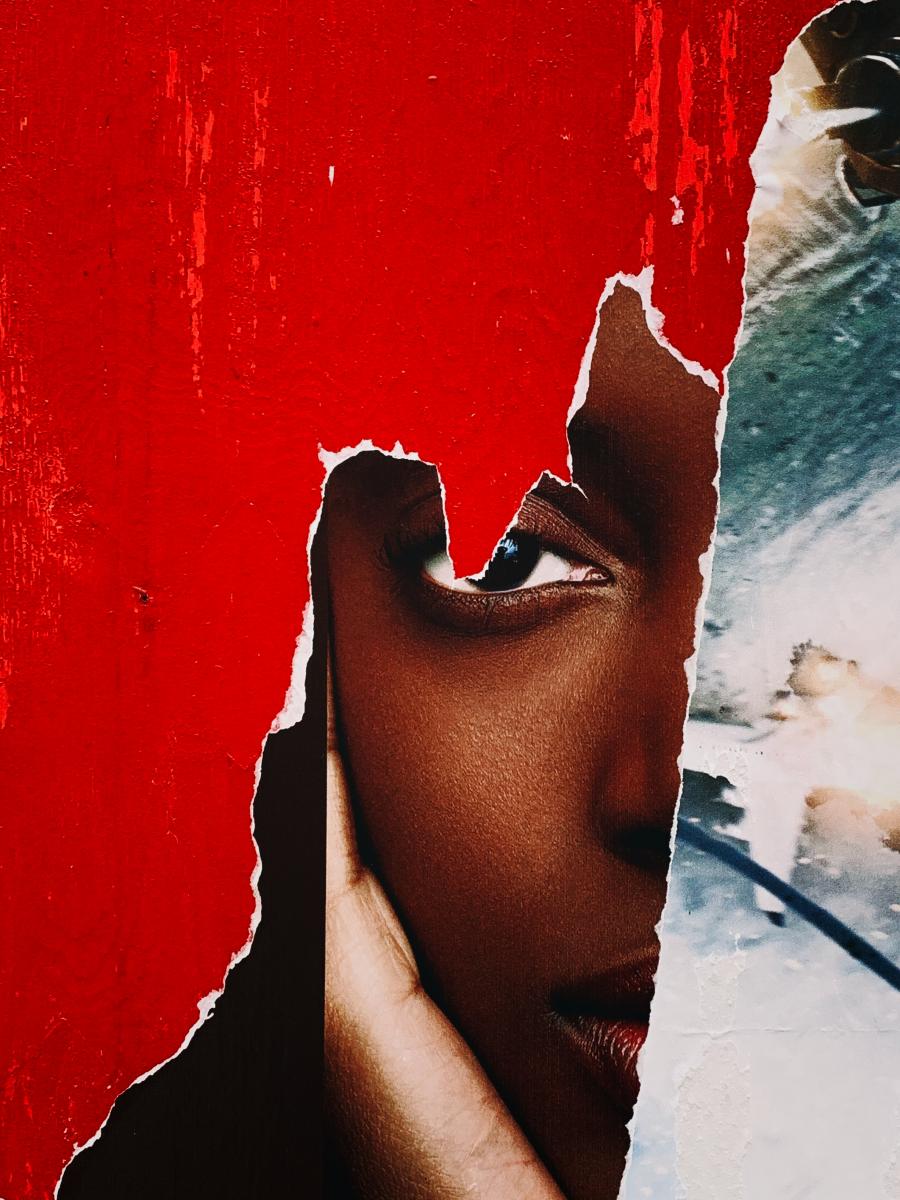In Spring 2022, I had the pleasure of piloting a zine residency at City High with classroom teacher Taylor Johnson. This post is a reflection on that process.
 The first day of the zine residency, I arrived at Taylor’s class lugging what I called my “collage box of random paper stuff”—a huge box of magazines, newspapers, musical scores, stickers, prints, star maps, road maps, botanical drawings, you name it. On the projector, I showed examples of different collages I found online, making sure to show collages that varied in layout, style, and content. We discussed why some collages stood out to us and what we liked about them. This allowed students to form an understanding of their aesthetics and to think about what they might want in their own collage. I opened the collage box of random paper stuff and told them to “dig in!” and make their own.
The first day of the zine residency, I arrived at Taylor’s class lugging what I called my “collage box of random paper stuff”—a huge box of magazines, newspapers, musical scores, stickers, prints, star maps, road maps, botanical drawings, you name it. On the projector, I showed examples of different collages I found online, making sure to show collages that varied in layout, style, and content. We discussed why some collages stood out to us and what we liked about them. This allowed students to form an understanding of their aesthetics and to think about what they might want in their own collage. I opened the collage box of random paper stuff and told them to “dig in!” and make their own.
Why start a zine residency with collages? I find that collages are a springboard. And I call the creator of collages a “scavenger.” The artist scavenges for images and text in magazines and newspapers. Part mood board and part vision board, collages can be a springboard for understanding our aesthetics, desires, concerns, and dare I say, even our obsessions. Through collage our obsessions become realized, even ones we weren’t even conscience of. One student found that they were drawn to the star maps in our collage box. They ended up making a zine for kids about being a unique star in the universe. One student found themselves attracted to dark, moody material, and subsequently made a zine about mental health and understanding their feelings.
Collages and zines allow us to understand and honor our obsessions. They are modes of zeroing in on interests, but they are also mediums of play. When making the collages, I emphasized that gluing was the last step: once you glue, you can’t go back. Once students had collected all the material they wanted to go into their collage, I encouraged them to move the material around the page. I said that in this medium we are free to play with different combinations of layout and layering on the page, so why limit yourself? We spent a good ten minutes moving our paper material around, and I’d overhear students asking one another for their opinions: “What if my image of these high heel shoes is in the corner of the collage, or should it be front and center?” Zines have a similar process. What should the order of the pages be? Should the zine make use of image and text? Another benefit of working with collages alongside zines: zines are an aesthetic medium. The creator considers layout, page order, and how images and text speak to one another.
Zines and collages are mediums of discovery. In them, we can find our aesthetic. In them we can find our inspiration. They allow us to say what it is we need to say. In them, we own our style and we own our obsessions.
Sophie Daws grew up in the Sonoran Desert and her poems revolve around labor, memory, and architecture--all of which are explored in terms of nature/ecology and a feminine-queer aesthetic. Sophie received her B.A. in English Literature and Creative Writing in 2018 and holds a minor in Plant Sciences. She received the Hattie Lockett Award in 2018 and graduated with honors for her poetry manuscript and thesis, Snag.
Image by Jazmin Quaynor

